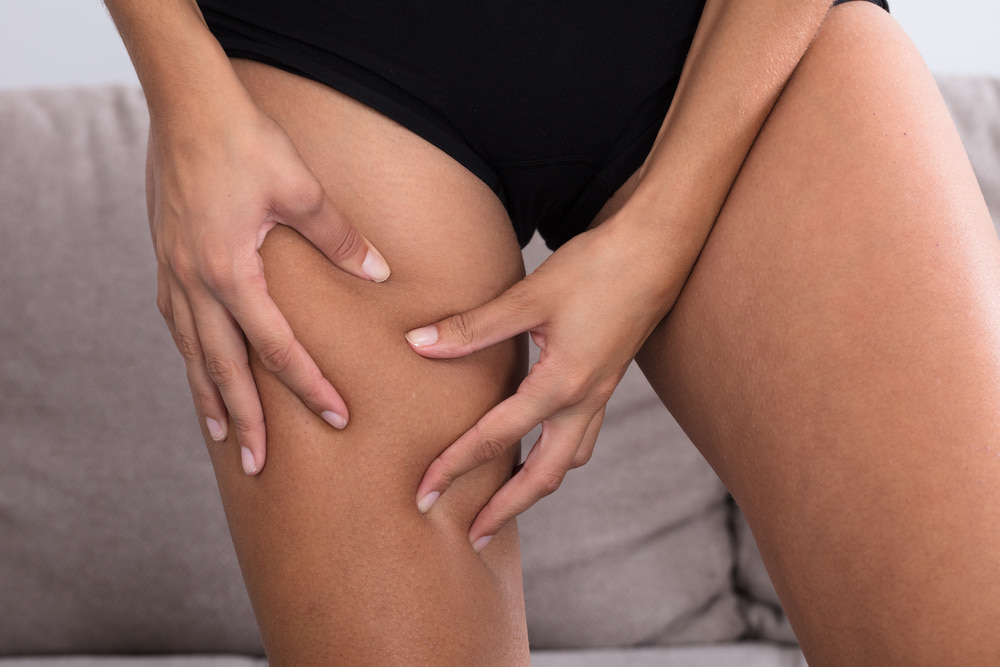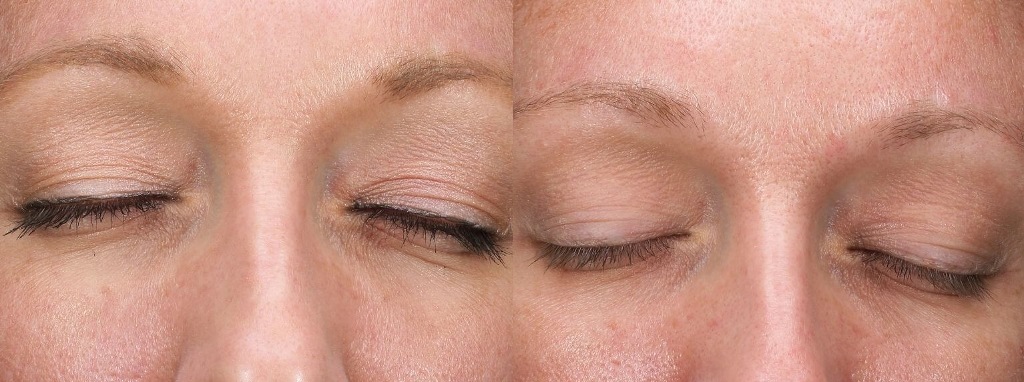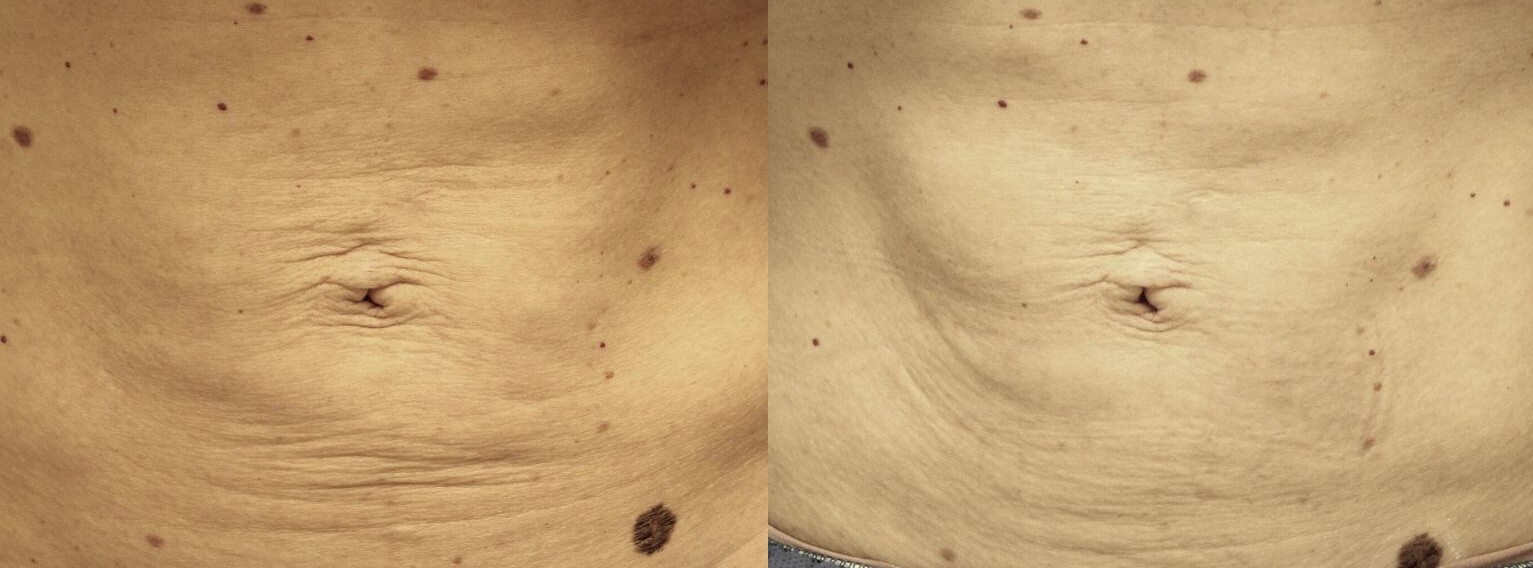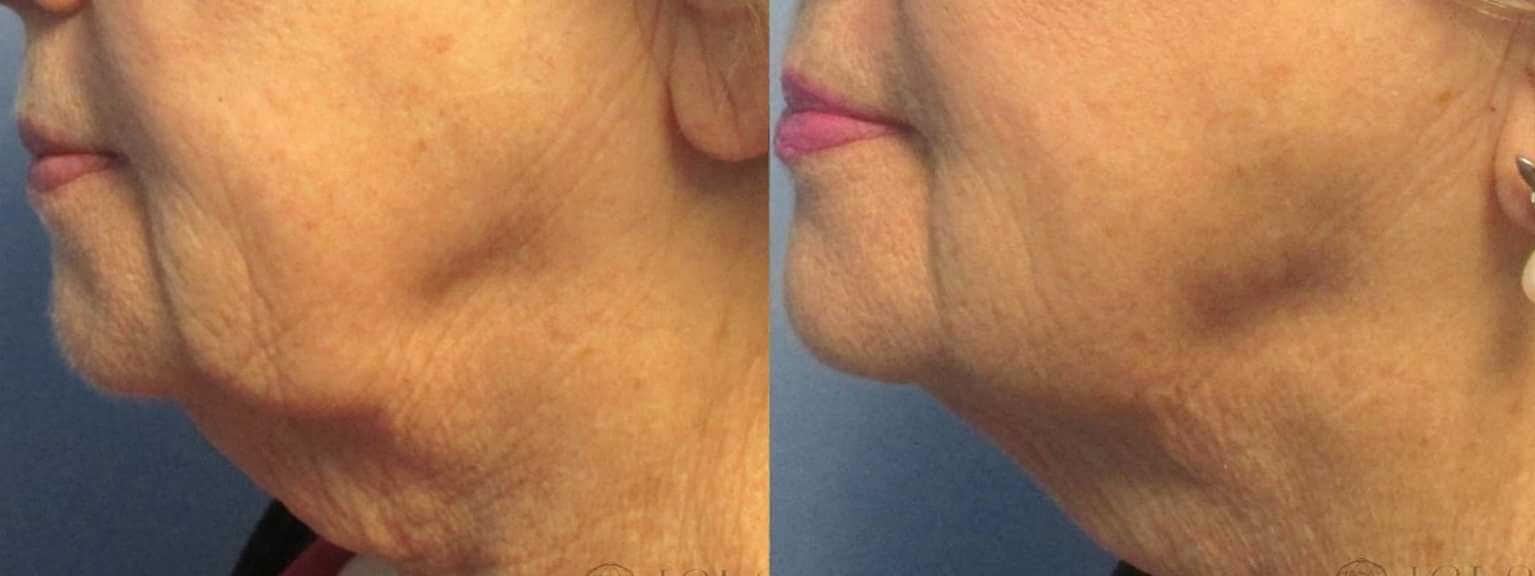
Nothing is more disheartening than realizing the number that you see on the scale doesn’t match what you see in the mirror. You bit the bullet, pushed yourself to the brink, lived with the discipline of a monk, and you were rewarded by reaching your new weight goals; but what happens if you were left with an altogether different and bigger problem? Sadly, one of the most difficult side effects of dramatic weight loss is excessive, sagging skin.
We will explore the causes of saggy skin, targeted treatments for different body areas, and both natural remedies and medical strategies to tighten skin. We aim to offer practical advice for enhancing skin health and appearance during and after your weight loss journey. We promise that all those collective hours on the elliptical were worth it for your health and well-being; now, let’s tell you how you can finally have the chance to have the figure you deserve.
Top Reasons for Saggy Skin After Weight Loss: What Causes It?
So why exactly does saggy skin appear and linger after you lose so much weight? It’s all about elasticity. As you gain weight, your skin gets stretched out and you start to lose the elasticity (the ability to bounce back) in your skin. When you work hard enough to lose excess weight, your skin can’t just catch up and shrink back like it used to. You’re then left with ripples of excess skin, commonly on the thighs, buttocks, abdomen and arms – even if you’re the lightest weight of your life.
- Duration of Obesity: The longer you carry extra weight, the more your skin stretches, losing its ability to return to its original shape. Imagine stretching a rubber band for years – it just doesn’t snap back like it used to. Studies show that prolonged stretching damages the dermis layer, which is key for skin firmness, leading to saggy skin after weight loss.
- Amount of Weight Lost: Losing a significant amount of weight, especially rapidly, can leave behind a lot of excess skin. Research indicates that more than 70% of adults experience excess skin after bariatric surgery, which helps improve health among those with severe obesity but results in noticeable loose skin because it can’t contract enough to match the new body size. According to a comprehensive review published in “Obesity Surgery,” negative physical, psychosocial, and daily life impacts of excess skin were reported in 67%, 75%, and 83% of studies, respectively.
- Age: As you age, your skin produces less collagen and elastin, which are essential for maintaining elasticity. After 20, collagen production drops by about 1% each year, making it harder for your skin to stay firm.
- Genetics: Your genes play a huge role in how elastic your skin is after losing weight. Some people just hit the genetic jackpot and have more elastic skin, while others might be more prone to sagging. Certain genes influence collagen and elastin production, impacting your skin’s ability to bounce back.
- Sun Exposure: Long-term sun exposure damages collagen and elastin in your skin, leading to sagging. UV rays break down these fibres, reducing skin firmness and elasticity. This cumulative damage can make loose skin even more pronounced after weight loss.
Areas of Concern After Weight Loss
For men and women who’ve struggled with obesity over the years, dramatic weight loss is often a lifelong journey that requires much preparation and patience. This process can often yield significant benefits, from improved confidence to a longer life.
With this in mind, rapid weight loss doesn’t equate to an immediately slimmer appearance; in fact, some patients who’ve undergone substantial weight loss find themselves somewhat underwhelmed with their overall appearance, especially when left with excess skin. Common areas include:
- The Stomach: You’ve worked hard to shed the weight, but now you’re left with a saggy stomach. Think of it like a deflated balloon – it needs some help to bounce back. Treatments like radiofrequency or a tummy tuck can tighten things up, and don’t underestimate the power of core exercises to help firm the area!
- The Face: While ‘Ozempic Face’ may be a trending topic, weight loss can sometimes leave your face looking gaunt and saggy— it’s like the skin didn’t get the memo. Facial exercises, collagen-boosting creams, and treatments like laser therapy or fillers can rejuvenate your look and help with saggy face skin. An eyelift or a facelift might be the answer for more dramatic results.
- The Neck: That pesky turkey neck can be a downer after weight loss. Exercises and laser treatments can help with loose skin on your neck, and if you want a more significant change, a neck lift might be your go-to.
- The Buttocks: A saggy butt after losing weight can feel unfair. Squats and lunges are your best friends here, building muscle to lift and firm. For a quicker fix, consider treatments like a non-surgical butt lift or non-surgical skin tightening.
- The Arms: Bat wings, be gone! Sagging skin on the arms can be tackled with strength training exercises targeting the triceps and biceps. If you need more help, arm lifts or laser skin tightening treatments can make a big difference.
- The Legs: Loose skin on the legs, especially the inner thighs, can be a bummer. Leg presses and lunges help, but if you’re looking for more dramatic results, thigh lifts and body contouring surgeries are effective options. Hydration and a healthy diet also support skin elasticity.
Does Loose Skin Go Away?
Loose skin after weight loss often doesn’t go away on its own; while minor improvements can occur, significant changes typically require medical interventions like skin-tightening treatments, exercise, or surgery.
How to Tighten Skin After Weight Loss Naturally
Stay Hydrated
Drinking plenty of water is crucial for maintaining skin elasticity and hydration. Aim for at least 8 glasses a day to help your skin stay supple and firm.
Balanced Diet
Eating a diet rich in vitamins A, C, and E, as well as proteins and omega-3 fatty acids, supports skin health. Foods like citrus fruits, bell peppers, broccoli, nuts, seeds, and fatty fish can help boost collagen production and improve skin elasticity.
Exercise
Strength training exercises help build muscle mass, which can address loose skin by filling in the gaps. Incorporate exercises like squats, lunges, and weight lifting into your routine to help tighten and tone your skin.
Skin Care Routine
Use moisturizers and skin-firming creams that contain ingredients like hyaluronic acid, retinoids, and collagen. These products can improve skin texture and support collagen production.
Massage
Regular massages can increase blood flow and stimulate collagen and elastin production. Using natural oils like almond or coconut oil during massages can enhance these effects.
How to Tighten Loose Skin: Non-Surgical Options
ICLS offers a variety of non-surgical skin tightening treatments tailored to different areas of the body, skin types, and desired results. Below is an overview of our most popular options:
Thermage®

How It Works: Thermage® uses radiofrequency (RF) energy to heat the deep layers of the skin, stimulating collagen production. This treatment is particularly effective for tightening skin on the face and around the eyes, reducing wrinkles and fine lines.
Best For:
- Face
- Eyes
Expected Results: Patients can expect a moderate to a significant reduction in loose skin and a smoother, more youthful appearance. The effects typically improve over several months as collagen production increases.
Profound®

How It Works: Profound® treatment combines RF energy with microneedling. The device creates micro-injuries in the skin while delivering RF energy to the deep layers, promoting the body’s natural healing process and boosting collagen and elastin production.
Best For:
- Face
- Neck
- Thighs
- Buttocks
- Abdomen
- Cellulite reduction
Expected Results: Profound® significantly improves skin elasticity and fullness, with noticeable results in contour and smoothness. The treatment also helps combat cellulite and improve skin texture.
Ultherapy®

How It Works: Ultherapy® uses focused ultrasound energy to heat the deep dermal layers and underlying supportive tissues without disrupting the skin’s surface. This stimulates collagen production and results in a gradual lifting and tightening effect.
Best For:
- Neck
- Jawline
- Brow
- Décolletage
- Submental area (under the chin)
Expected Results: Patients can expect a natural-looking lift and tighter skin over several months as new collagen forms. The non-invasive nature of Ultherapy® makes it an excellent option for those seeking gradual, subtle improvements for subsequent weight loss.
Sylfirm
How It Works: Sylfirm is the first FDA-approved device offering both pulsed and continuous wave modes. It uses RF energy and microneedles to penetrate the superficial and deep layers of the skin, addressing various skin concerns.
Best For:
- Fine lines
- Wrinkles
- Sagging skin
- Uneven texture
- Melasma
- Enlarged pores
- Scars
- Redness
Expected Results: Sylfirm can significantly improve skin texture and firmness and treat specific issues like melasma and scars. Patients typically see improvements in skin appearance and texture over time.
How to Tighten Loose Skin: Surgical Options
Worried about extra skin keeping you from enjoying your hard work? Surgery to eliminate unwanted skin can help you finally achieve the body shape you’ve dreamed of. Not all reconstructive treatments are the same. As with weight loss procedures, your plastic surgery may involve a combination of treatments tailored to fit your needs and goals. Some of the options available at our state-of-the-art facility in Oakville include:
Arm Lift (Brachioplasty)
Who The Ideal Candidate Is: An ideal candidate for an arm lift is someone with significant sagging skin on the upper arms due to weight loss or aging. Candidates should be in good overall health, non-smokers, and have realistic expectations about the surgery’s outcomes.
What to Expect: An arm lift removes excess skin and fat from the upper arms, resulting in a more toned and contoured appearance. The incision is typically hidden on the inside of the arm. Recovery time can vary, but most patients return to normal activities within a few weeks.
Breast Lift
Who The Ideal Candidate Is: Women who have experienced a loss of breast volume and sagging due to weight loss, pregnancy, or aging are ideal candidates for a breast lift. Men with excess tissue in the chest area due to weight loss may also be candidates for male breast reduction.
What to Expect: A breast lift involves lifting and reshaping the breasts to a higher position on the chest. For women, this can create a more youthful and flattering appearance. For men, it can result in a more masculine chest contour. Recovery typically involves a few weeks of limited activity.
Thigh and Buttock Lift
Who The Ideal Candidate Is: Candidates for thigh and buttock lifts are those with sagging skin and tissue around the thighs and buttocks due to significant weight loss. Candidates for these medical treatments should be in good health and have maintained a stable and moderate weight for several months.
What to Expect: These procedures involve removing excess skin and fat from the thigh and buttock areas, resulting in a smoother and more contoured appearance. Recovery times vary, but most patients can resume normal activities within a few weeks to a month.
Tummy Tuck (Abdominoplasty)
Who The Ideal Candidate Is: Ideal candidates for a tummy tuck are individuals with excess skin and fat in the abdominal area that does not respond to diet and exercise. Candidates should be in good health and have realistic expectations about the surgery.
What to Expect: A tummy tuck removes excess skin and fat from the abdomen and tightens the underlying muscles to create a firmer and slimmer waistline. Recovery typically involves a few weeks of restricted activity, with full recovery taking a few months.
Surgical Skin Tightening
Who The Ideal Candidate Is: Candidates for surgical skin tightening are individuals with significant sagging skin that cannot be addressed through non-surgical means. They should be in good health and have realistic expectations about the outcomes.
What to Expect: Surgical skin tightening can involve various techniques, including liposuction and radiofrequency (RF) energy, to stimulate collagen production and tighten the skin. These procedures are often combined to achieve the best results. Recovery times vary depending on the extent of the surgery.
It’s essential to consult with a certified plastic surgeon to determine the best approach for your specific needs. Dr. Khanna at our Oakville facility is dedicated to educating clients about medical procedures, using modern techniques and technologies, and combining treatments to achieve optimal results. Dr. Khanna’s approach ensures patients receive personalized care tailored to their unique goals.
By consulting with an expert like Dr. Khanna, you can explore all available options and develop a treatment plan that helps you achieve the body shape you’ve worked so hard for.
What is the Best Way to Tighten Skin After Weight Loss?
Reducing excess loose skin after weight loss involves a combination of strength training exercises, maintaining a balanced diet rich in vitamins and proteins, staying hydrated, and considering non-surgical treatments like radiofrequency, ultrasound therapy, or laser treatments. For men and women who’ve lost substantial weight later in life, it can be extremely difficult to remove or retract excess skin without some type of surgical removal process.
How to Prevent Loose Skin During Weight Loss
Weight fluctuation is a normal part of life. As individuals gain weight, the skin stretches to accommodate the increased growth. When a person gains weight and loses it within a few months, collagen and elastin help the skin tighten (think pregnant women). This allows patients to return to their original size and shape relatively easily.
To prevent loose skin while losing weight, aim for gradual weight loss, maintain a balanced diet rich in vitamins A, C, and E, stay hydrated, and incorporate regular physical activity, especially strength training exercises.
FAQ
- How much weight loss causes loose skin? Significant weight loss, typically over 100 pounds, is more likely to cause loose skin, but this can vary depending on factors such as age, genetics, and the rate of weight loss. That said, if you’ve experienced significant weight gain over the course of many years, the skin stretches to the point where the collagen and elastin fibres are permanently damaged. As a result, once the weight is lost, the skin in the area can remain stretched out and loose.
- Does collagen help with loose skin during weight loss? Yes, collagen supplements can support skin elasticity and help reduce the appearance of loose skin during weight loss by boosting the skin’s collagen production.
